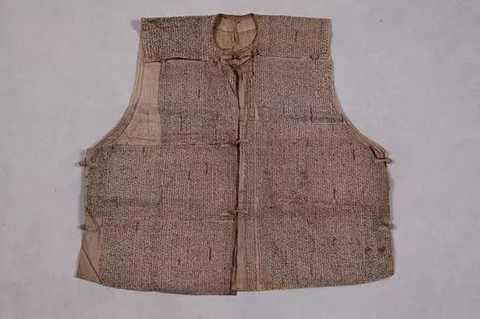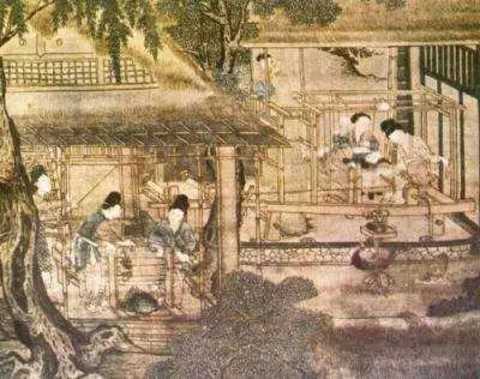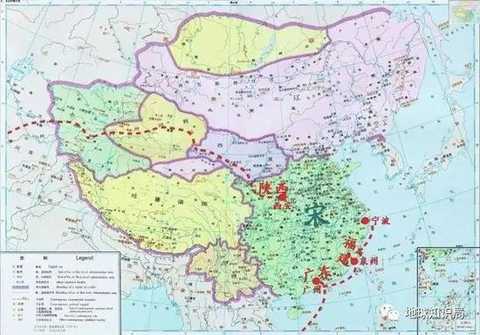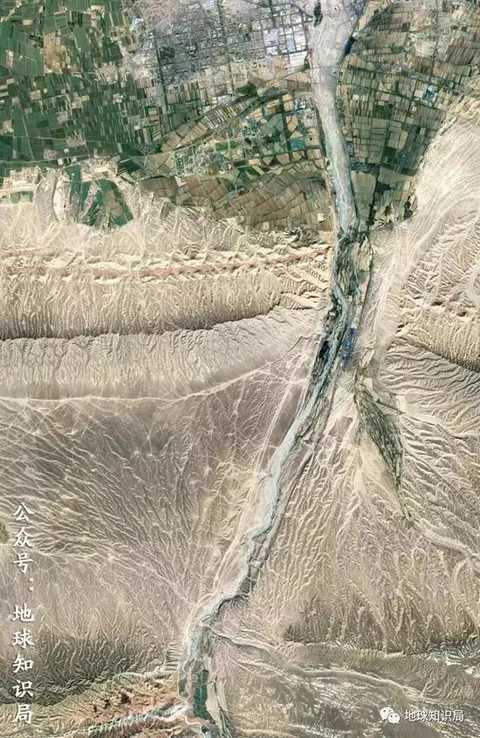Clothing, food, housing and transportation are four major events that have a great impact on the lives of Chinese people. Their historical changes have also emboldened the wisdom and efforts of the Chinese. When people used cotton as a raw material for textile fabrics, a revolution began. The special nature of cotton not only replaced this plant with mulberry, but also conquered the desperate desert, conquered the soft, noble, gold-like silk , which gradually became the favorite clothing fabric for Chinese people, and let People and the earth are intertwined like textiles. From the accustomed clothes, they find tenacious, natural, environmentally friendly , and even more amazing life values, which profoundly affect the material and spiritual life of the Chinese. So how does a small cotton accomplish such a feat? 壹 / more magical fabric than silk The role of clothes is primarily to keep warm, followed by comfort, and the role of establishing etiquette and distinguishing identity is born. In modern society, people can easily find the clothes that suit them. Whether it is fabric or design, it is easy to achieve the functions that clothes should have. But this is not a matter of course. In the long history, humans have not even invented the right fabrics. The choice of fabrics like today is a luxury for the ancients. For the Chinese, the textile that first appeared in the field of vision was linen. Burlap vest "cuffed" replica (Source: "The Imperial Examination") Today linen fabrics seem to be once again a popular fabric, and the most important reason seems to be its breathability and comfort. However, the ancient hemp spinning technology is far less than today. Thick needle burlap is a common form. It is often not suitable for human body curves when worn on the body. It is also common for rough linen to wear delicate skin. Is it comfortable to wear modern linen? Because of poverty and often need to work in the poor, docks and other poor occupations are suitable for wearing, linen is not a good choice for the nobles. What's more, the price of linen is good, that is, it leaks. For the ancient society lacking heating facilities, the clothes with poor warmth function are huge shortcomings in terms of functionality, and linen is not a good dress for them. Fortunately, the Chinese discovered a mysterious animal fiber, silk, very early. The invention of silk has made China's textile science a big step forward. The silk-woven fabric fits the curve of the human body, and does not scratch the skin when worn on the body. The appearance also looks like the unique luster of the silk fabric. There are such fabrics to choose from, and the rich and powerful are naturally very satisfied. In 2013, China Post issued a set of three special stamps, one sheetlet, of the Tang Dynasty painter Zhang Wei's work. This kind of satisfaction is not only popular in China, but also spread abroad – who doesn’t like slippery things? But there are also many problems with silk brocade. The first point is that the cost of this kind of fabric is high. From the cultivation of mulberry to the cultivation of silkworms, it takes a lot of labor to burn the silk, and every process burns money. This kind of fabric is of course basically goodbye to the lives of ordinary people. Silk is not easy every step What's more, silk does not perform well in extreme climates. It can neither absorb sweat in the summer nor keep warm in the winter. It still lacks functionality and can only be used as a ceremonial garment. The emergence of cotton has solved the problems that the first two fabrics cannot solve. Although the long-staple cotton appeared very late in China, it was popular with people once it appeared. The most important reason, I am afraid, is still in some very rare qualities of cotton fabrics. The clothes made of cotton fiber have good water absorption and breathability, and the wearing comfort is greatly improved compared with the silk which is glued to the body. Even the dignitaries should be lined with cotton in the fabric of silk, and they know how popular cotton is. Compared with linen , the softness and fit of the cotton cloth is obviously improved, and the person with fine skin and tender meat will not wear the skin because of the cotton cloth. è´°/cotton is not a flower, it is a gentleman Long-staple cotton is an imported product from the West in China, and it was first planted in large-scale in Xinjiang. "Liang Shu·Northwest Zhuhai Biography" said: "Gao Changguo...there are many plants and grasses, and the name is white, and the name is white." This Gaochang country is the area of ​​Turpan in the hinterland of Xinjiang today. Turpan, famous for its fruit, is indeed an agricultural fertile soil that is not suitable for planting all kinds of plants in Xinjiang. This record of the Northern and Southern Dynasties also marked the beginning of the long-staple cotton into China. Turpan as a key hub between northern Xinjiang, southern Xinjiang and Hexi Not only facilitates the concentration of technology, but also facilitates diffusion But until this period, in fact, the cultivation of cotton was concentrated in the border areas, and there was no complete control of the central dynasty. Until the Song Dynasty, the open business environment gave the opportunity for long cotton to enter China. Not only the finished products, but even the plants and seeds that can be planted, they are part of the Chinese economic crop. In the trade system of the Song Dynasty, the three trade provinces of Shaanxi, Guangdong and Fujian were gradually conquered by the cotton that flew across the ocean, becoming a big cotton grower and textile. The Chinese costumes officially entered the cotton-coat era. . Cotton enters China from northwest and southeast respectively And access to the developed domestic transportation network of the Song Dynasty By the time the Mongolian Yuan went south, a large part of the entire Eurasia was attributed to the territory of the Mongol Empire. When domestic trade was more free and convenient, cotton began to enter China more and more with the merchants of Arab merchants. The linen market and the original short-staple cotton were killed. The farmers discovered the new varieties brought by the Arabs and gradually gave up the original cotton varieties. This is also the true background of the history of the Song and Yuan Dynasties, which were first planted in China, and the first to win the benefit of Guanshun, Guangshou, and the foreigners. Although the establishment of the Yuan was extremely destructive, it also quickly opened up the exchange channels of Asian countries. China's blue-and-white porcelain that relayed silk in foreign trade was also a multicultural mixed product of this period. However, cotton is still growing in the areas where they first entered China, that is, from the Xinjiang to Gansu Hexi Corridor. In fact, in these areas, there have been many precursors of desertification at that time, which are not suitable for plant growth. But cotton can still thrive here. Xinjiang Corps: Cotton straw returning scene In fact, until now, cotton in Xinjiang still provides extremely high quality raw materials for the Chinese textile industry. At the edge of the city of Shihezi in Xinjiang, the cotton farmers used the manpower to remove the big stones. In the soil with more than half the sand and stone, they planted cotton by hand, letting it grow in the 8th grade sandstorm in Xinjiang and 40 degrees extreme temperature. Here, cotton plants can almost be said to grow from stones. Also because of the stable Tianshan water source (Manas River) Only made Shihezi Oasis It is in this place where other plants are afraid to avoid it. Only cotton absorbs the sun, blooms its own green luster, and provides people with textile raw materials. Not only that, cotton plants are born on the front line of the border with the desert, and there is also the role of guarding the land in the wind and sand. In the 8th-level storm in Xinjiang, cotton is still tenaciously standing on its own land, fighting hard living humans and the harsh natural environment. A pure white cotton ball that swings in the wild in the wild is a hymn of life. å/cotton and nature and people Last year, the Japanese-level photographer Ueda Yoshihiko went to China in Xinjiang three times to shoot a series of photographic films and documentaries. The 60-year-old Mr. Ueda, who used his camera to touch the growth of cotton with his own distance, recorded the full life cycle of cotton. In his camera lens, cotton, nature and mankind live in harmony - people use cotton to connect with the harsh environment; let the hard work pay, the possibility of harvest; desperate desert, with new hope, this It is the balance of cotton, nature and man in the eyes of the master. Cotton is intertwined with the earth like textiles, allowing people to find tenacious, natural, environmentally friendly, and even more amazing life values ​​from the clothes they are used to. Mens Flannel Shirts,Mens Flannel Shirts Plaid,100% Cotton Men Flannel Shirts,Check Flannel Hood Shirts Shaoxing Moonten Trade Co., Ltd , https://www.moontenshirts.com







